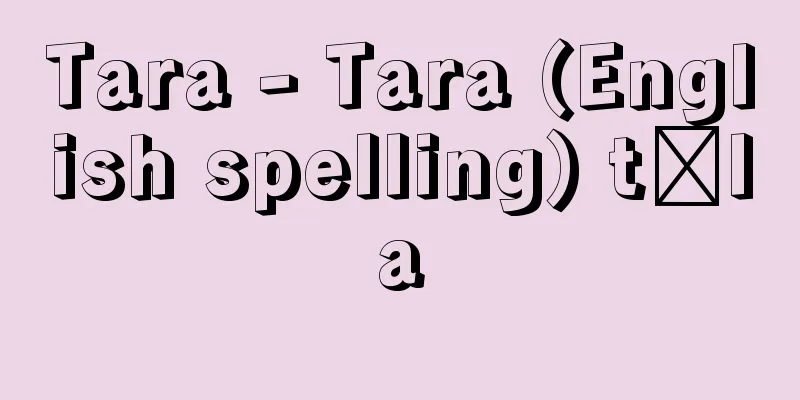Tokugawa Nariaki

|
Lord of Mito Domain in the late Edo period. The third son of Harutoshi. Born on March 11, 1791, at the Edo domain residence in Koishikawa. Called Torazaburo, later Keizaburo. His first name was Toshinori. His pen name was Koshin. His pen names were Keizan and Senryukaku. His posthumous name was Retsuko. He studied under Aizawa Yasushi (Seishisai) and others, and was highly regarded as a wise and intelligent man. After the death of his elder brother, the domain lord Narinobu, in 1829 (Bunsei 12), he was pushed by reformists such as Toko Fujita to become the 9th domain lord, and changed his name to Nariaki. He revamped personnel, promoting Fujita and Aizawa, and carried out the Tenpo Reforms, which placed emphasis on coastal defense, civil administration, and education. He cast guns, planned the development of Ezochi (Ezo region) and sent ships there, carried out the Tenpo Land Survey and trade with other countries, built the Kodokan (Kodokan) to educate his retainers, and strengthened ideological control by abolishing Buddhism within the domain. However, these reforms unique to the Mito domain drew the suspicions of the shogunate, and due to the machinations of conservatives within the domain (Yuki Torajyu and others), he was ordered to retire and placed under house arrest by the shogunate in May 1844 (Koka 1), and handed over the family headship to his eldest son, Yoshiatsu. Later, reformists such as Takeda Kounsai petitioned for his return to the shogunate, and, faced with the "foreign threat" of the arrival of foreign ships, the shogunate's cabinet, led by senior councilor Abe Masahiro and others, shifted to a policy of cooperation with the powerful domains, and in 1854 (Kaei 2), he was allowed to participate in domain politics. Then, when Perry arrived in 1853, he was ordered to serve as an adviser to the shogunate government on the issue of maritime defense, but his hard-line foreign policy was not accepted by the shogunate government, and he was relieved of his duties following Abe's death in 1857 (Ansei 4). In 1858, his political rival Ii Naosuke became chief advisor, and the Treaty of Amity and Commerce between the United States and Japan was signed without imperial sanction. Furthermore, in the long-running issue of the succession to the shogunate, Tokugawa Yoshitomi, the lord of the Kishu domain, was selected as the successor over Nariaki's own son, Hitotsubashi Yoshinobu. Furious at the unauthorized signing, Nariaki suddenly went to the castle together with his son Yoshinobu and Tokugawa Yoshikatsu, the lord of Owari Domain, to denounce the violation of the Imperial decree, but was instead ordered to be placed under house arrest. The following year, he was sentenced to permanent confinement in his home province as part of the Ansei Purge. He died of an illness in Mito on August 15, 1861. [Katsuo Inoue] [Reference] |Main Hall (Nationally designated important cultural property). Nationally designated special historic site. Mito City, Ibaraki Prefecture © Kodokan Office "> Former Kodokan Source: Shogakukan Encyclopedia Nipponica About Encyclopedia Nipponica Information | Legend |
|
幕末の水戸(みと)藩主。治紀(はるとし)の三男。寛政(かんせい)12年3月11日、小石川の江戸藩邸に生まれる。虎三郎、のち敬三郎と称す。初名紀教(としのり)。字(あざな)は子信。号は景山、潜龍閣。諡(おくりな)を烈公という。会沢安(あいざわやすし)(正志斎(せいしさい))らに学び賢才の誉れ高く、1829年(文政12)長兄の藩主斉脩(なりのぶ)死後、藤田東湖(とうこ)ら改革派に推されて第9代藩主となり、斉昭と改めた。人事を刷新して藤田や会沢らを抜擢(ばってき)し、海防、民政、教育を重視した天保(てんぽう)の改革を行った。銃砲鋳造を行い、蝦夷地(えぞち)開拓を計画して船を派遣し、天保検地や諸国との国産交易を実施し、また藩士教育に弘道館(こうどうかん)を建て、領内の廃仏棄釈によって思想統制を強化するなどした。しかし、これら水戸藩独自の改革は幕府の嫌疑を招くところとなり、また藩内保守派(結城寅寿(ゆうきとらじゅ)ら)の策動もあって44年(弘化1)5月幕府から隠居・謹慎を命ぜられ、長男慶篤(よしあつ)に家督を譲った。その後、武田耕雲斎(こううんさい)ら改革派による幕府への復職嘆願があり、また外国艦船の来航という「外患」の下で、老中阿部正弘(あべまさひろ)らの幕閣が有力諸藩との協調策に転じたこともあって、49年(嘉永2)藩政への参与を許された。 ついで1853年ペリー来航に際しては海防問題について幕政参与を命じられたが、その対外強硬論は幕閣のいれるところとならず、57年(安政4)阿部の死により、参与を免ぜられた。58年政敵井伊直弼(いいなおすけ)が大老となり、日米修好通商条約が無勅許のまま調印され、またかねてより争われていた将軍継嗣(けいし)問題では斉昭の実子一橋慶喜(ひとつばしよしのぶ)を抑えて紀州藩主徳川慶福(よしとみ)が後継者に決定された。無断調印を怒った斉昭は、実子慶喜、尾張(おわり)藩主徳川慶勝(よしかつ)らとともに不時登城して違勅を責めたがかえって謹慎を命じられ、翌年、安政(あんせい)の大獄により国許(くにもと)永蟄居(えいちっきょ)に処された。万延(まんえん)元年8月15日、水戸で病没。 [井上勝生] [参照項目] |正庁(国指定重要文化財)。国指定特別史跡 茨城県水戸市©弘道館事務所"> 旧弘道館 出典 小学館 日本大百科全書(ニッポニカ)日本大百科全書(ニッポニカ)について 情報 | 凡例 |
Recommend
Cleaning department - Kamondokoro
The composition of the Innoshi changed considerab...
Gichu-ji Temple
An independent temple in Bamba, Otsu City , Shiga ...
Automobile insurance - jidoushahoken
Insurance intended to compensate for bodily injur...
Ofuke - Ofuke
… During the Edo period, Mino was divided into te...
Cassa per il Mezzogiorno
...Thus, one of the factors behind the government...
Aepinus, FUT (English name) AepinusFUT
...However, it was confirmed that gravitational f...
Alexander Grothendieck
French mathematician. He spent his childhood in G...
Maeda Seison
Japanese painter. His real name was Renzo. He was...
Fake medicine
〘noun〙① Fake medicine. ※Yōjōkun (1713) 7 "Pse...
Membrane Equilibrium - McHayko
This refers to the chemical equilibrium that exis...
Lactuca dentata - Lactuca dentata
A perennial herb of the Asteraceae family. It is w...
Echinococcus
A general term for parasitic worms of the genus E...
The struggle to regain the right to strike
This refers to the struggle of labor unions to res...
Niwafuji (Japanese wisteria) - Indigofera decora; Chinese indigo
A perennial plant of the legume family. It is also...
Semiotic Semantics
…G. Frege was the first to study logical semantic...









